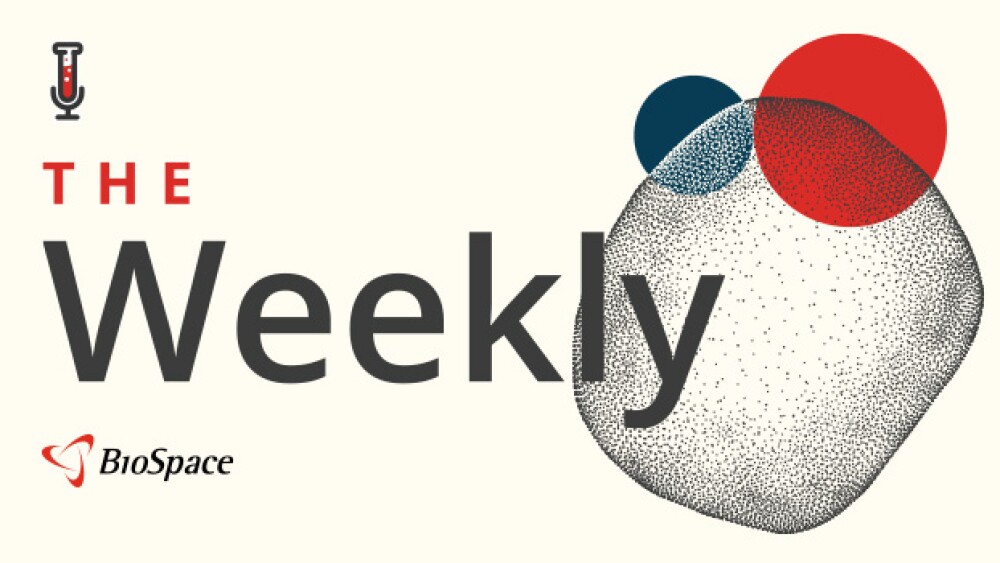GRI Bio, Inc. today provided a business outlook and highlighted upcoming milestones for its innovative pipeline of NKT cell modulators in development.
Rapidly advancing clinical pipeline in potential high-value inflammatory, fibrotic and autoimmune diseases
Leading NKT regulation technology targeting earlier in the inflammatory cascade to modulate disease progression
LA JOLLA, CA, May 22, 2023 (GLOBE NEWSWIRE) -- GRI Bio, Inc. (NASDAQ: GRI) (“GRI Bio” or the “Company”), a biotechnology company advancing an innovative pipeline of Natural Killer T (“NKT”) cell modulators for the treatment of inflammatory, fibrotic and autoimmune diseases, today provided a business outlook and highlighted upcoming milestones for its innovative pipeline of NKT cell modulators in development.
“We believe our leading NKT platform technology represents a compelling opportunity with the potential for significant value creation. Based on the data demonstrated to date, we have confidence in our ability to modulate inflammatory diseases earlier in the cascade to interrupt disease progression and provide benefit to patients. We continue to make solid progress in the advancement of our lead programs, GRI-0621 and GRI-0803, and are poised to reach a number of value-driving milestones in the near term,” commented Marc Hertz, PhD, Chief Executive Officer of GRI Bio. “On the corporate front, we believe we have investment proceeds and access to additional investment to fund planned operations through 2024 and have bolstered the expertise of our team and Board of Directors. We are well prepared to rapidly propel the Company forward and are committed to providing much needed treatment options for inflammatory, fibrotic and autoimmune diseases.”
GRI-0621:Type 1 invariant NKT (“iNKT”) antagonistin development for the treatment of idiopathic pulmonary fibrosis (IPF).
IPF is a rare chronic progressive pulmonary disease with abnormal scarring of the lung blocking the movement of oxygen into the bloodstream. GRI Bio’s lead program, GRI-0621 is a small molecule RAR-βɣ dual agonist that inhibits the activity of human Type I, iNKT cells. In preliminary trials to date1 and previous trials with the oral formulation, GRI-0621 has been shown to improve fibrosis in multiple disease models and improve LFTs and other markers of inflammation and injury in patients.
Key Highlights:
- Orphan indication with ~40,000 newly diagnosed cases in the United States annually2
- Currently available treatments for IPF are limited with only two approved drugs that come with significant side-effects, limited compliance and no impact on survival3
- Despite challenges, total 2022 sales of the two approved drugs in the United States were ~$4.3 billion combined4
- GRI-0621 is designed to target upstream in the inflammatory cascade and to provide potential for greater efficacy
- Established safety profile as an oral formulation
- iNKT inhibition demonstrated fibrosis resolution in multiple animal models
- Extensive IP protection with issued medical use patents and market LOE through 2036
GRI is developing and repurposing GRI-0621 as a once-daily oral capsule for the treatment of IPF with the potential to expand into additional fibrotic indications. The Company plans to leverage the 505(b)(2) regulatory pathway and to launch a Phase 2a biomarker study evaluating GRI-0621 for the treatment of IPF. The 2:1 randomized Phase 2a study is expected to enroll approximately 36 patients on background IPF therapy. At present, the planned primary endpoint for the study is safety and tolerability of oral GRI-0621 as assessed by clinical labs and adverse events (AEs) after 12 weeks of treatment. Planned secondary endpoints are change from baseline in serum biomarkers collected at Week 6 and Week 12; assessment of the pharmacokinetics (PK) of GRI-0621 at the Week 12 visit of treatment (steady state); and determining the pharmacodynamic (PD) activity of oral GRI-0621 as measured by inhibition of NKT1 cell activation in blood after 6 weeks and 12 weeks, and from bronchoalveolar lavage (BAL) fluid after 12 weeks of treatment in a Sub-Study. An additional exploratory endpoint for the study is to assess the effect of GRI-0621 on pulmonary function at baseline and after 6 weeks and 12 weeks of treatment. The Company will conduct an interim analysis when 8 of the 12 placebo-treated patients have completed 6 weeks of treatment.
Expected Upcoming Milestones
- H2 2023: Launch Phase 2a biomarker study
- H1 2024: Report interim data from Phase 2a biomarker study
- H2 2024: Report topline results from Phase 2a biomarker study
GRI-0803:Novel activator of human Type 2 NKT cells in development for the treatment of autoimmune disorders, with an initial focus on systemic lupus erythematosus (SLE).
SLE, the most common form of lupus, is an autoimmune disease in which the immune system attacks its own tissue and organs. GRI Bio’s second asset in development, GRI-0803, is a novel activator of human Type 2 NKT cells. Activation of Type 2 NKT leads to a dendritic cell-mediated inhibition of iNKT cells. In the Company’s preclinical studies, Type 2 NKT activating molecules, GRI-0803 and GRI-0124, were observed to inhibit both murine and human iNKT cells. Oral administration of these Type 2 NKT activating molecules was observed to inhibit lupus nephritis and to significantly improve overall survival.
Key Highlights:
- Annual prevalence estimated to be ~161,000 people in the United States affected with definite SLE5
- Current treatments for SLE are limited, consisting primarily of immunosuppressive therapies
- GRI-0803 is designed to target upstream in the inflammatory cascade and to provide potential for greater efficacy
- Oral administration in a spontaneous model of lupus nephritis demonstrated significant inhibition of pro-inflammatory cytokines, including IL-6 and IL-17; significant inhibition of autoantibodies; and improvement in overall and proteinuria-free survival
Expected Upcoming Milestones
- Q1 2024: Complete IND-enabling studies
- H1 2024: File IND
- Q3 2024: Report Phase 1a SAD topline results
- Q4 2024: Report Phase 1b MAD topline results
Pipeline Expansion Opportunities
Additionally, with a library of over 500 proprietary compounds, GRI has the potential to fuel a growing pipeline. The Company has ongoing evaluations for pipeline expansion opportunities targeting potential indications in multiple sclerosis, rheumatoid arthritis, inflammatory bowel disease, insulin dependent diabetes mellitus and amyotrophic lateral sclerosis.
About GRI Bio, Inc.
GRI Bio is a clinical-stage biopharmaceutical company focused on fundamentally changing the way inflammatory, fibrotic and autoimmune diseases are treated. GRI Bio’s therapies are designed to target the activity of NKT cells, which are key regulators earlier in the inflammatory cascade, to interrupt disease progression and restore the immune system to homeostasis. NKT cells are innate-like T cells that share properties of both NK and T cells and are a functional link between the innate and adaptive immune responses. Type I invariant NKT (“iNKT”) cells play a critical role in propagating the injury, inflammatory response, and fibrosis observed in inflammatory and fibrotic indications. GRI Bio’s lead program, GRI-0621, is an inhibitor of iNKT cell activity and is being developed as a novel oral therapeutic for the treatment of idiopathic pulmonary fibrosis, a serious disease with significant unmet need. The Company is also developing a pipeline of novel Type 2 NKT agonists for the treatment of systemic lupus erythematosus. Additionally, with a library of over 500 proprietary compounds, GRI Bio has the ability to fuel a growing pipeline.
Forward Looking Statements
This press release contains “forward-looking statements” within the meaning of the “safe harbor” provisions of the Private Securities Litigation Reform Act of 1995. Forward-looking statements may be identified by the use of words such as “anticipate,” “believe,” “contemplate,” “could,” “estimate,” “expect,” “intend,” “seek,” “may,” “might,” “plan,” “potential,” “predict,” “project,” “target,” “aim,” “should,” “will,” “would,” or the negative of these words or other similar expressions. These forward-looking statements are based on the Company’s current beliefs and expectations. Forward-looking statements include, but are not limited to, statements regarding: the Company’s expectations with respect to development and commercialization of the Company’s product candidates, the initiation or completion of clinical trials, the potential benefits and impact of the Company’s product candidates and the related timing of regulatory approvals, if any, evaluations and judgements regarding the Company’s intellectual property position, the ability of the Company to achieve the milestones presented and the timing of such milestones, any implication that the results or preliminary results of earlier or prior clinical trials will be representative or indicative of future clinical trials, estimates regarding the funding necessary to fund the Company’s planned operations and any estimate or implication as to potential market size or potential revenue. Actual results may differ from the forward-looking statements expressed by the Company in this press release and consequently, you should not rely on these forward-looking statements as predictions of future events. These forward-looking statements are subject to inherent uncertainties, risks and assumptions that are difficult to predict, including, without limitation: (1) the inability to maintain the listing of the Company’s common stock on Nasdaq; (2) changes in applicable laws or regulations; (3) the inability of the Company to raise financing in the future; (4) the success, cost and timing of the Company’s product development activities; (5) the inability of the Company to obtain and maintain regulatory clearance or approval for their products, and any related restrictions and limitations of any cleared or approved product; (6) the inability of the Company to identify, in-license or acquire additional technology; (7) the inability of the Company to compete with other companies currently marketing or engaged in the development of products and services that the Company is currently developing; (8) the size and growth potential of the markets for the Company’s products and services, and its ability to serve those markets, either alone or in partnership with others; (9) inaccuracy in the Company’s estimates regarding expenses, future revenue, capital requirements and needs for and the ability to obtain additional financing; (10) the Company’s ability to protect and enforce its intellectual property portfolio; and (10) other risks and uncertainties indicated from time to time in the Company’s filings with the U.S. Securities and Exchange Commission (the “SEC”), including the risks and uncertainties described in the “Risk Factors” section of the Company’s most recent Annual Report on Form 10-K filed with the SEC on and Quarterly Report on Form 10-Q filed with the SEC on May 15, 2023 and subsequently filed reports. Forward-looking statements contained in this announcement are made as of this date, and the Company undertakes no duty to update such information except as required under applicable law. This press release also contains estimates and other statistical data made by independent parties and by the Company relating to market size and growth and other data about its industry. This data involves a number of assumptions and limitations, and you are cautioned not to give undue weight to such estimates.
Investor Contact:
JTC Team, LLC
Jenene Thomas
(833) 475-8247
GRI@jtcir.com
1 I. Maricic et al., Differential Activation of Hepatic Invariant NKT Cell Subsets Plays a Key Role in Progression of Nonalcoholic Steatohepatitis. J Immunol 201, 3017-3035 (2018), Tazoral™ for the Treatment of Moderate to Very Severe Plaque Psoriasis Briefing Document, Allergan (https://wayback.archive-it.org/7993/20170405104812/https://www.fda.gov/ohrms/dockets/ac/04/briefing/2004-4062B1_01_Allergan-Background.pdf)
2 J. Sauleda, B. Núñez, E. Sala, J. B. Soriano, Idiopathic Pulmonary Fibrosis: Epidemiology, Natural History, Phenotypes. Med Sci (Basel) 6, (2018)
3 T. M. Maher et al., Global incidence and prevalence of idiopathic pulmonary fibrosis. Respir Res 22, 197 (2021)
4 Companies’ earnings reports
5https://www.cdc.gov/lupus/facts/detailed.html





